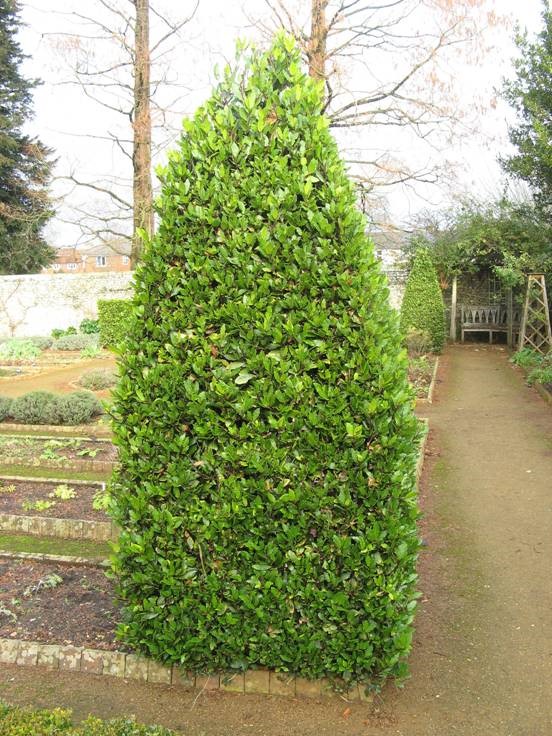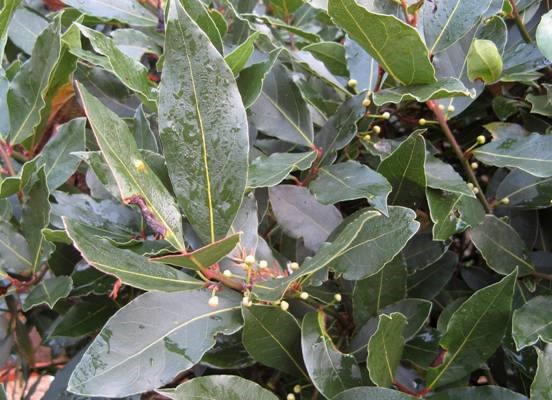Bay
Herbs A-Z > Know your herbs
Bay Tree - Laurus nobilis

Bay tree, Sweet bay, Bay laurel - Laurus nobilis
The bay tree is an aromatic evergreen tree or large shrub with rough, firm leaves and is native to the Mediterranean region. The plant is a widespread relic of the laurel forests that originally covered much of the region during the Pliocene, around 5m years ago, when damper conditions pertained. Relic laurel forest can still be seen in parts of Turkey, Madeira, southern Spain and northern Morocco.
The Bay tree, like Holly, is dioecious, that is, male and female trees are separate individuals. The fruit (black berries) is therefore borne by the female trees.
Although the leaves are used in cooking, bay belongs to the poisonous Lauraceae family.
Bay as food
Whole bay leaves are used almost exclusively as flavouring agents in food preparation and are normally removed at the end of cooking being brittle and inedible.
Many Mediterranean, North African and Indian dishes call for the addition of bay leaves which have a deep clove-like flavour. Bay is an essential ingredient of bouquet garni used in French meat-based casseroles.
Bay as medicine
In Greek and Roman history bay laurel has been used to ward against diseases such as the plague. Hippocrates used the plant for a range of ailments, internal and external and medieval monks used it for stomach problems, colic and renal ailments.
In modern herbalism, the plant is used for ailments of the digestive tract, to stimulate appetite, to stimulate hair growth and for respiratory problems.

Properties of Bay
The most abundant chemical found in laurel essential oil is eucalyptol. Terpenes and lauric acid make up the rest of the chemical content. Both essential and fatty oils are found in the fruit and the leaves. These are pressed and distilled to leave the oils.
Notes on the cultivation of Bay
Young trees should be planted between April and September in free draining soil in full sun or partial shade. Bay can withstand temperatures as low as -5C and even lower if planted in a sheltered position.
You can take soft cuttings in early summer or hardwood cuttings in late summer and place them in damp compost with a plastic bag sealed on top until rooting has taken place.
Light pruning can help shape the tree. Bay is not tolerant of waterlogging.
